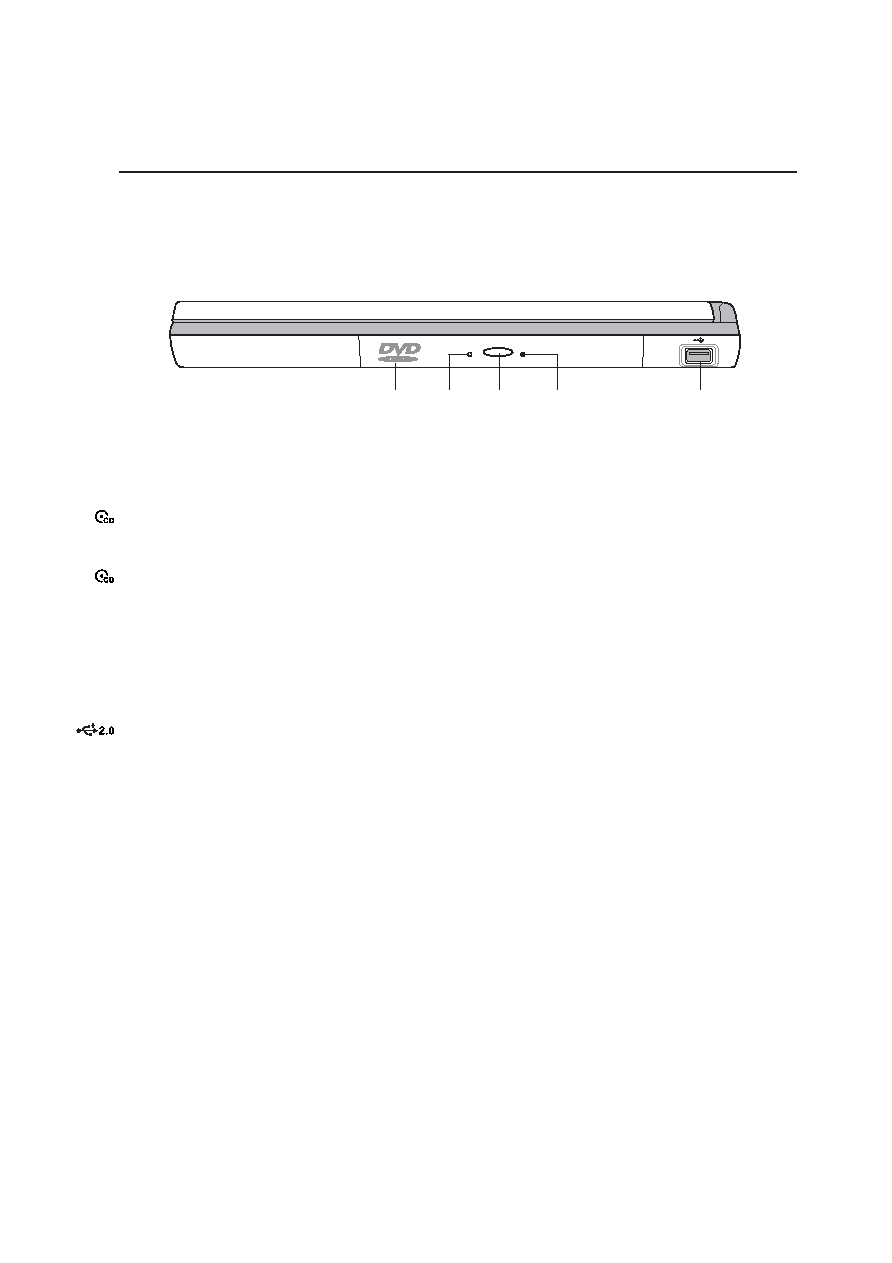
21
Knowing the Parts
2
Right Side
Refer to the diagram below to identify the components on this side of the Notebook PC.
Optical
Drive
USB 2.0
Port
Emergency
Eject
Activity
LED
Electronic
Eject
USB 2.0 Port
The Universal Serial Bus is compatible with USB 2.0 or USB 1.1 devices such as keyboards, pointing
devices, video cameras, modems, hard disk drives, printers, monitors, and scanners connected in a
series up to 12Mbits/sec (USB 1.1) and 480Mbits/sec (USB 2.0). USB allows many devices to run
simultaneously on a single computer, with peripherals such as USB keyboards and some newer moni-
tors acting as additional plug-in sites or hubs. USB supports hot-swapping of devices so that peripher-
als can be connected or disconnected without restarting the computer.
Optical Drive
The Notebook PC comes in two models: DVD ROM or DVD ROM + CD-RW combo.
Electronic Eject, Emergency Eject, Activity LED
The optical drive eject is an electronic eject button for opening the tray. You can also eject the optical
drive tray through any software player or by right clicking the optical drive in Windows™ “My Com-
puter.” The emergency eject is used to eject the optical drive tray in case the electronic eject does not
work. Do not use the emergency eject in place of the electronic eject. The activity LED lights in propor-
tion to the data transferred between the Notebook PC and optical disc.

